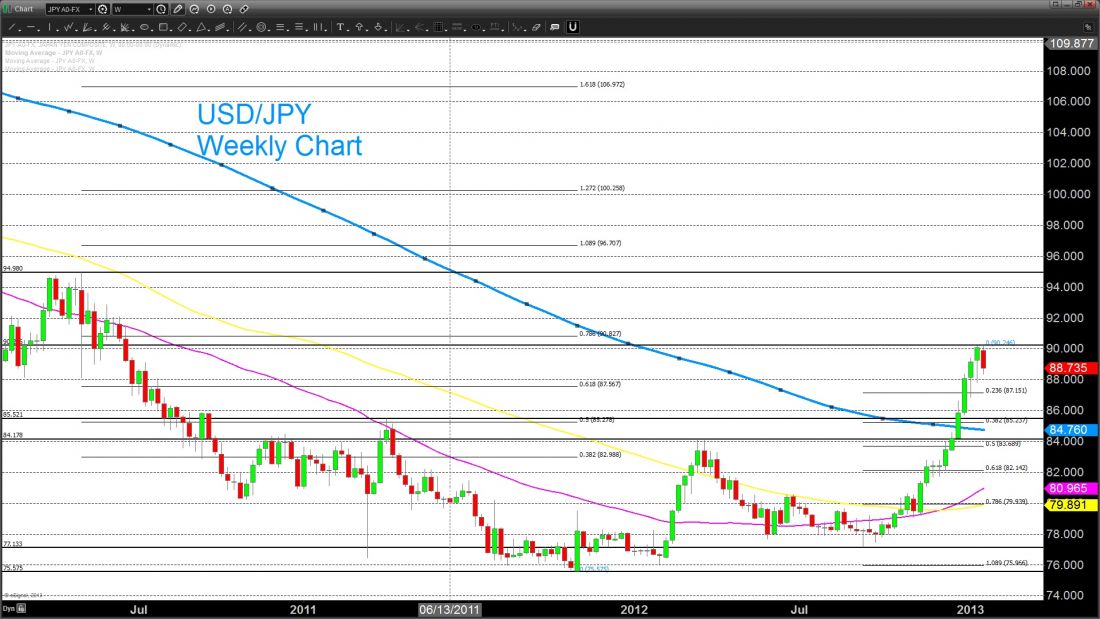How many countries are participating in quantitative easing (QE)? That answer is too many.
The art of printing money to buy bonds is what is currently sparking the currency war debate. Central banks are providing excessive QE in hopes of spurring economic growth for their respective economies.
Prior to last night’s Bank of Japan announcement, the Federal Reserve stole all the headlines regarding their enormous purchases of treasury securities and mortgage-backed securities, along with a near zero interest rate for banks. The low rates were supposed to help trigger growth and for the most part, the U.S. economy is on the mend and at least heading in the right direction.
The dollar currency reaction to the Fed’s QE 1, QE 2 and QE3 programs provided an interesting currency reaction. After QE1, the EUR/USD lost about 15% to 1.47 in that first month, while the USD/JPY fell about 10% to the 90 handle. After QE2, the dollar weakened again, but it took a lot longer for the effects to provide a significant devaluation. The EUR/USD took several months to reach 1.48 and the USD/JPY tested the lower 80 handle. After QE3, the effects were limited on both pairs.
The recent rally in USD/JPY started in November shortly after elections were called in Japan. Once Shinzo Abe announced that he would demand the BOJ to raise the inflation target the yen plummeted. A move that saw a one-way move from 80.50 to 90.
Last night was the first moment of actual action in the Abe era. The first policy decision by the BOJ provided an initial reaction of disappointment as the open ended buying would not kick in till January 2015. Throw in a key technical level (90.00) and we had a major corrective move lower.
While we are seeing the USD/JPY pare some of its losses, the overall correction may not be done. We still maintain an outlook that should target a stronger valuation by mid-year. Expectations are for the U.S. economy to grow and eventually when we start discussing higher interest rates in the U.S., the BOJ will not need to put forth such an effort in easing.
Investors may have closed out their yen shorts for the time being, but we will look to see a further pullback before returning to that trade. If we see a USD/JPY weakness towards 87.15, we will look to buy half of our position here and the second half if we see a further corrective move 84.76. A hard-stop will be placed 83.50 and profit targets will aim for the 93.50 level





